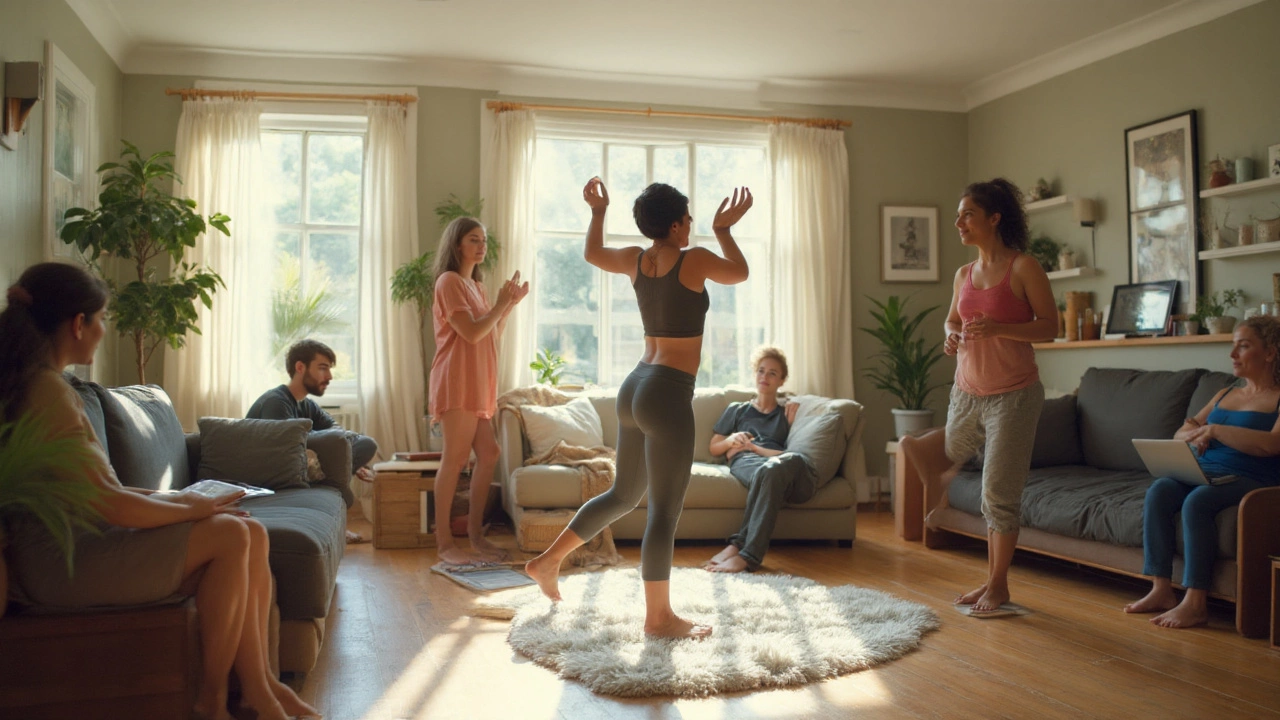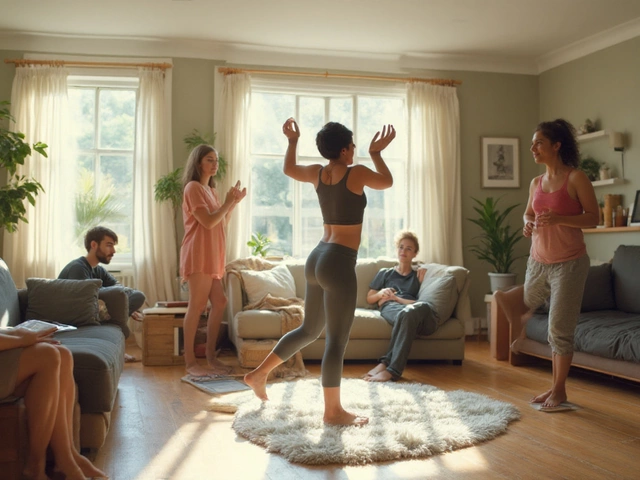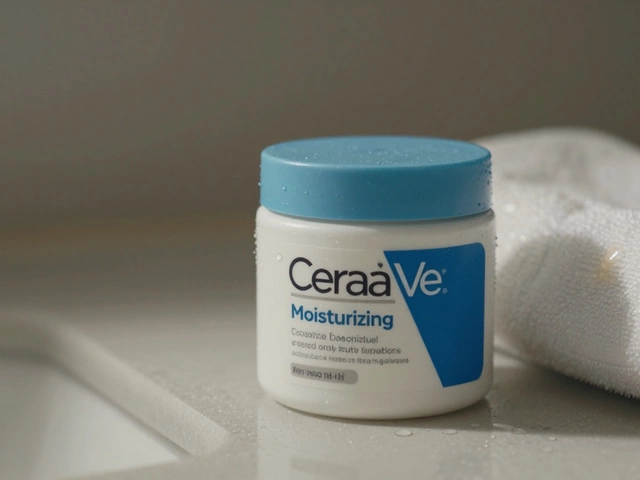Picture this: rain pounding the windows, streets slick and empty, and motivation to hit the gym evaporating like a puddle in July. So what actually is the best indoor exercise? It’s the question everyone asks when the weather (or life) keeps you in. But there’s more to this than convenience. The right indoor workout can boost your health, mood, and energy—no matter what’s happening outside. Let’s cut through the noise, skip patterns that get old fast, and find the moves that really matter, backed by actual research and tips people use when there’s nowhere to run...except in your living room.
How to Choose the Best Indoor Exercise for Real Results
So, you’re searching for indoor workouts that don’t waste your time. The trouble is, "best" depends on what *you* want. Are you aiming to shed fat, build muscle, feel less stressed, or just stop feeling guilty about your Netflix habits? Science points to a few options that come out on top regardless of your goal.
High-intensity interval training (HIIT) steals the spotlight for many reasons. HIIT means brief bursts of effort—think burpees, squat jumps, or fast-paced shadowboxing—mixed with very short rests. You don’t need fancy gear. Research from the American College of Sports Medicine shows just 20 minutes of HIIT can torch as many calories as a 45-minute jog. Even two HIIT sessions a week can lower blood pressure and boost mood, which is something most people don’t realize.
Cardio isn’t just for weight loss—it keeps your heart pumped and healthy. The most popular indoor routines are surprisingly basic: dancing in your kitchen, skipping rope, or marching up and down steps. The key is raising your heart rate for at least 20 brisk minutes. Got bad knees or hate jumping? Low-impact options like indoor cycling, swimming (if you have a pool), or working out on a rowing machine bring serious benefits too, minus the injury risk. And if you’re curious about calories burned, check out this snapshot of different workouts and what you actually get out of them:
| Exercise | Calories Burned (30 min, 70 kg adult) |
|---|---|
| HIIT | 350 |
| Jump Rope | 400 |
| Dancing | 210 |
| Yoga (Power) | 180 |
| Pilates | 150 |
| Bodyweight Circuits | 250 |
But burning calories isn’t everything. Flexibility and balance matter just as much, which is why pilates and yoga have millions of fans. A big bonus—these can help relieve back pain, a problem that’s gotten worse since 2020 when so many switched to home offices.
So when someone asks for “the best,” there’s no single winner. For most people, mixing up exercises is key. Start with what fires you up! Try a HIIT circuit followed by mindful cool-down yoga. Or dance freely, then add a few core moves to tighten things up. If boredom kills your motivation, change the playlist, the room, or try a virtual workout class. The less predictable your menu, the more likely you’ll actually stick with it.
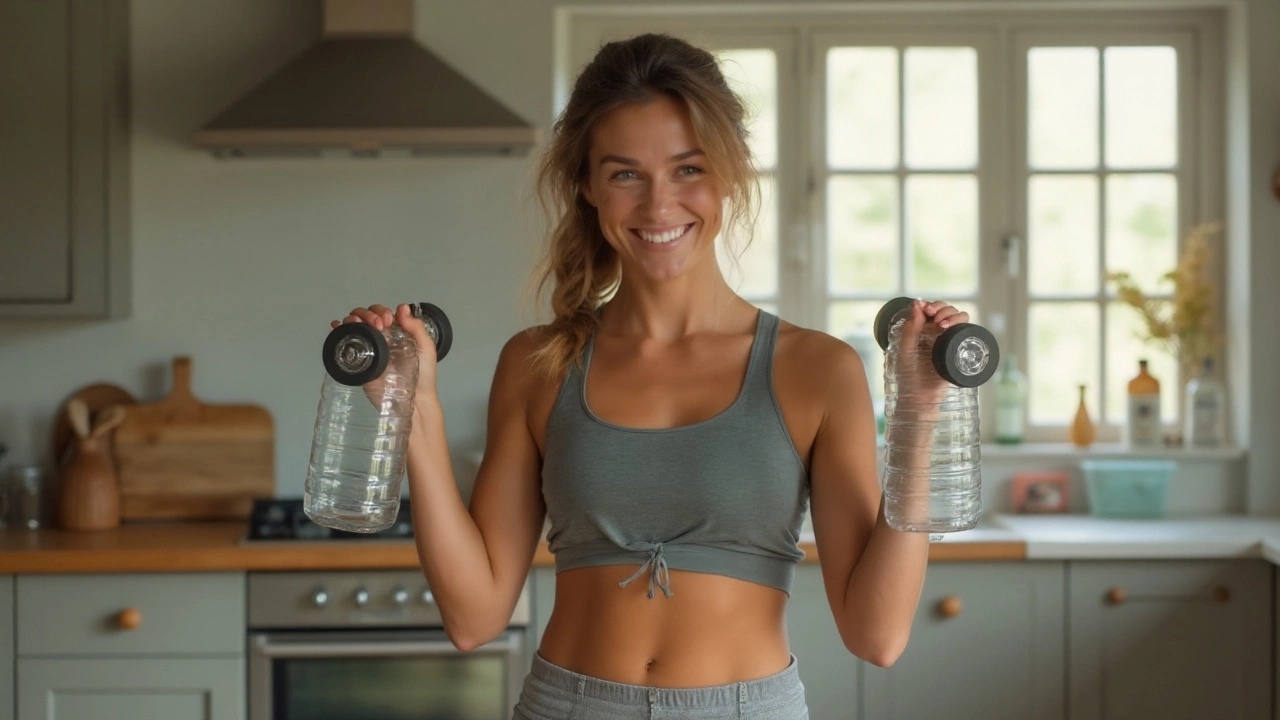
Tips to Stay Motivated (and Actually Enjoy It)
Here’s the honest truth: even the most effective exercise won’t work if you avoid it like a dentist trip. Motivation is the real secret to fitness indoors. The biggest hurdle isn’t lack of time or space—it’s getting past the start line and keeping momentum over days and weeks, not just one “good day.”
First tip? Take workouts off autopilot. Don’t do the same squats and push-ups forever. Keep things fresh. Add a new move every Monday, or set a challenge, like nailing a full minute of jump rope or doing a headstand by the end of the month. Challenges give you a reason to show up, even when you’d rather snooze.
Technology can be your best friend here. There are free apps that guide routines, track progress, and even give you digital badges (which shouldn’t be motivating, but weirdly are). Smartwatches and fitness trackers also reward you with numbers, and numbers are motivating—even if nobody sees them but you. If you like some social pressure, try an online class with friends or family. Peer pressure works wonders on days when you’re about to bail.
Space is another big issue. If your living room doubles as a gym, move what you can (slide the coffee table, plug in a fan, toss out the ancient yoga mat you never actually liked). The less “setting up” you need to do, the more likely you are to follow through. Music matters more than most people think, too. A killer playlist makes burpees less brutal. Find songs that you can’t help but move to and let them pull you through those tough, sweaty minutes.
Ever heard about habit stacking? It’s a sneaky trick that works. If you already brush your teeth right after breakfast, tack your workout onto that habit. Pretty soon your brain links both things, and you don’t need to think about motivation. It just happens. Small cues help, too—put your dumbbells near the kettle, or leave sneakers by the bathroom door.
Reward yourself for staying on track. It doesn’t have to be chocolate cake—try a new book, an episode of your guilty-pleasure show, or a long bath. Rewards keep things fun and mark your streak, which is more valuable than aiming for “perfection” and quitting after your first break.
Don’t believe the line that says you need fancy equipment—bodyweight exercises are as effective as machines for most folks. Pull-ups on a solid doorframe, push-ups, planks, wall sits, triceps dips on a chair: all old-school, all free, all effective. If you’re seriously pressed for space, resistance bands cost less than a pizza and fit inside a desk drawer.
Biggest tip? Lower the bar to start. Often, “just five minutes” is enough for your brain to stop making excuses. And usually, you won’t stop at five—you’ll surprise yourself and do way more once you begin. On days you really can’t, celebrate the micro-wins: holding a plank for 30 seconds or doing 10 squats between Zoom calls. That still counts.
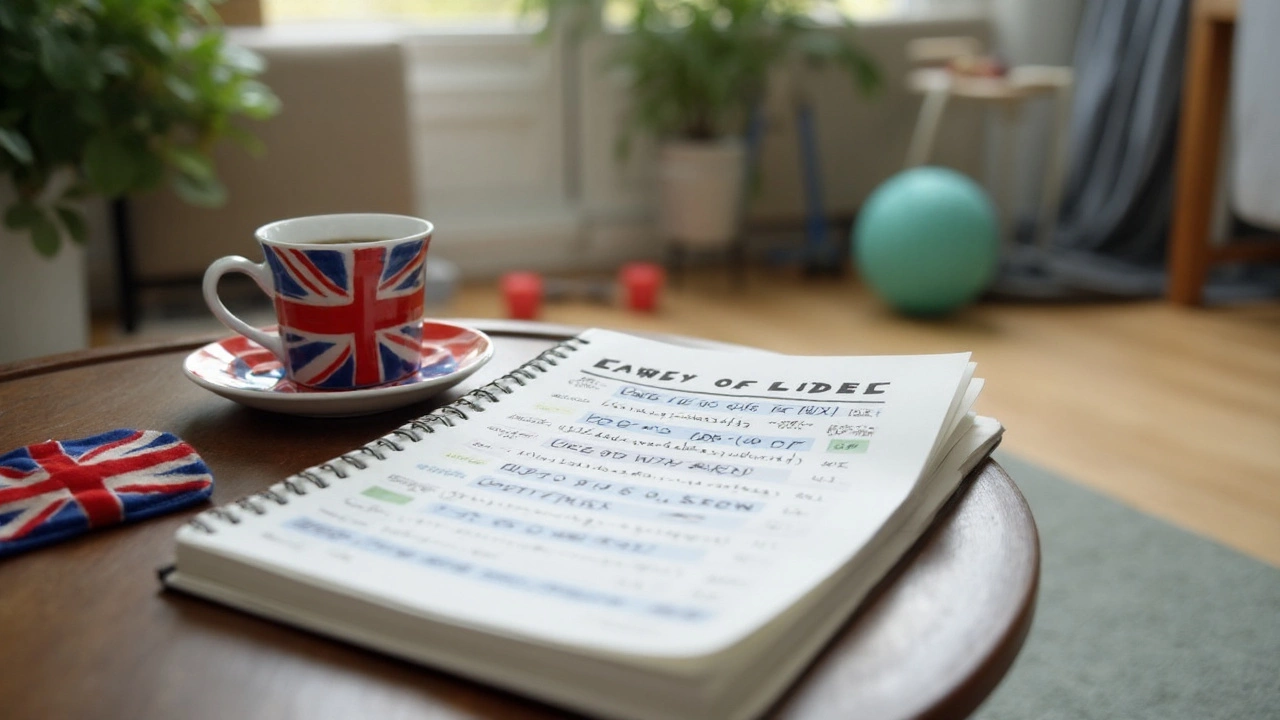
The Health Benefits of Regular Indoor Workouts
Pounding the treadmill or sweating through a dance workout isn’t just a vanity project. The health science here is wild—moving your body indoors can boost everything from your heart to your mental game, even your relationship with food. Let’s get into the benefits that actual studies back up.
First off, regular indoor exercise slashes your risk of heart disease, stroke, and diabetes, even if you never set foot outside. A study from the Journal of the American Medical Association showed indoor aerobic workouts could lower blood pressure and cholesterol as much as outdoor running. That means people in cold or polluted cities aren't missing out by working out indoors.
Muscle workouts—bodyweight moves, resistance bands, or light weights—build strength for climbing stairs, carrying groceries, or playing with your dog. Even short sessions three times a week help slow the natural decline in muscle and bone that hits as early as your thirties. For everyone who dreads aging, think of an indoor workout as future-proofing your body.
Mental health is a huge part of the puzzle. Sweaty, challenging workouts trigger a real chemical reaction: your body releases endorphins that slash stress and anxiety. Data from the World Health Organization shows that daily exercise, even for 15 minutes, can cut your risk of depression by nearly a third. Bonus: most people sleep better when they move more, especially if they don’t exercise too close to bedtime.
Let’s talk immunity. If you want to dodge every bug that comes around, regular workouts can help. Exercise increases the circulation of disease-fighting cells according to a paper in the British Journal of Sports Medicine. People who exercised 5+ days a week reported about 40% fewer colds, even in winter.
Weight management is easier when you’re exercising regularly, and it isn’t always about calorie burn. Workouts boost metabolism, help regulate hunger hormones, and stop those wild mood swings that make you eat everything in sight. That means fewer wild cravings at 10 p.m., and more control at the dinner table—no tiny salad diets required.
Ready for a surprise? Indoor exercise is safer in lots of cases: there’s no traffic, less pollution, and you control everything from heat to hydration. Plus, you’re way less likely to “accidentally” end up at the burger place on your way home from the gym.
If you’re worried about the social side or missing out on gym camaraderie, group video workouts or online communities offer all the peer energy most people crave. And if you’ve got kids or pets? They can join in (or just laugh at you), so it becomes a family thing.
The bottom line: Whether you want to torch calories, feel less stressed, or just stop your back from aching after another day at your desk, the best indoor exercise is the one that makes you sweat *and* come back again tomorrow. Pick what feels fun, mix it up often, and celebrate every little win. You won’t just change your body; you’ll likely shift your whole mood, energy, and confidence, rain or shine.
